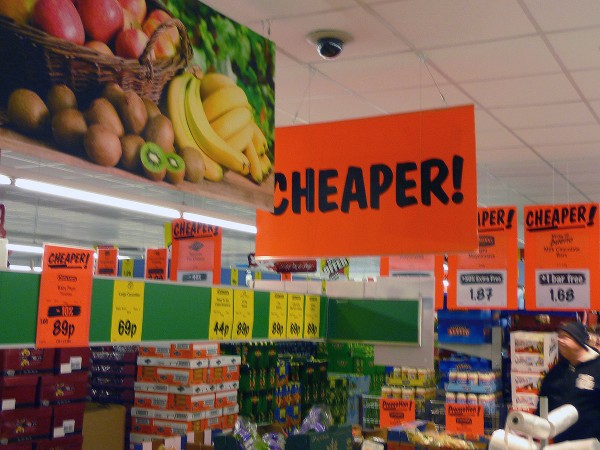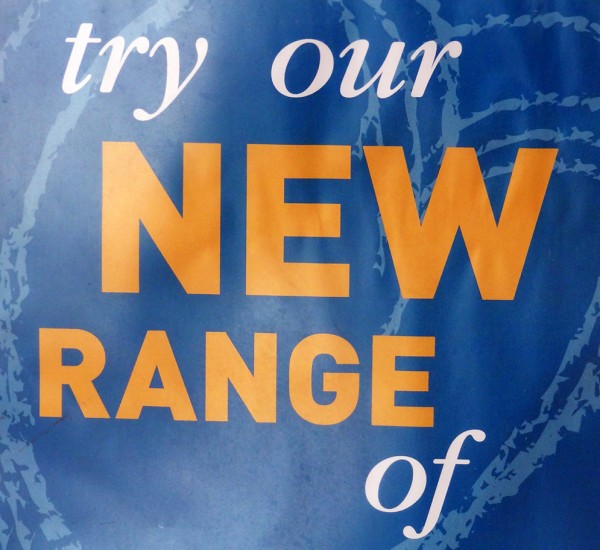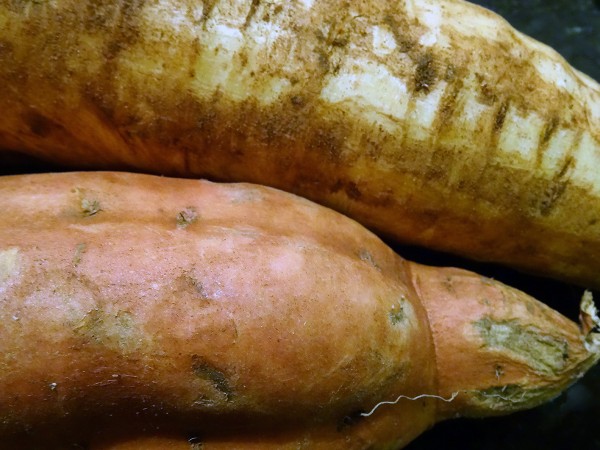 Imagine a situation where you are thinking of buying a good and so you go to an e-commerce marketplace such as Amazon, eBay, Etsy or Onbuy. How confident are you about the quality of the different brands/makes that are listed for sale on these digital platforms? How do you choose which product to buy? Is the decision strongly influenced by customer reviews and rating?
Imagine a situation where you are thinking of buying a good and so you go to an e-commerce marketplace such as Amazon, eBay, Etsy or Onbuy. How confident are you about the quality of the different brands/makes that are listed for sale on these digital platforms? How do you choose which product to buy? Is the decision strongly influenced by customer reviews and rating?
When a customer is choosing what to buy it raises an interesting question: to what extent can the true quality of the different goods/services be observed at the time of purchase? Although perfect observability is highly unlikely, the level of consumer information about a product’s true quality will vary between different types of transaction.
For example, when consumers can physically inspect and test/try a product in a shop, it can help them to make more accurate judgements about its quality and condition. This poses a problem for online sellers of high-quality versions of a good. Without the ability to inspect the item physically, consumers may be unsure about its characteristics. They may worry that the online description provided by the seller deliberately misrepresents the true quality of the item.
Consumers may have other concerns about the general reliability of online sellers. For example, in comparison to buying the product from a physical store, consumers may worry that:
- They will have to wait longer to receive the good. In many cases, when consumers purchase a product from a high-street store, they can walk away with the item and start using it straight away. When purchasing on line, they may end up waiting weeks or even longer before the product is finally delivered.
- It will be more difficult to return the product and get a refund.
- They are more likely to come across fraudulent sellers who have set-up a fake website.
This greater level of uncertainty about the true characteristics of the product and the general reliability of the seller will have a negative impact on consumers’ willingness to pay for all goods. This impact is likely to be particularly strong for high-quality versions of a product. If consumers’ willingness to pay falls below the reservation price of many sellers of high-quality goods, then the market could suffer from adverse selection and market failure.
Are there any within-market arrangements that could help deal with this issue? One possibility is for sellers to signal the quality of their products by posting consumer ratings and reviews. If consumers see that a product has many positive ratings, then this will increase their confidence in the quality of the product and so increase their willingness to pay. This could then reduce both levels of asymmetric information and the chances of adverse selection occurring in the market,
There is survey evidence that many people do read consumer reviews when choosing products on line and are heavily influenced by the ratings.
The problem of fake reviews
 However, when consumers look at these reviews can they be sure that they reflect consumers’ honest opinions and/or actual experience of using the good or service? Firms may have an incentive to manipulate and post fake reviews. For example, they could:
However, when consumers look at these reviews can they be sure that they reflect consumers’ honest opinions and/or actual experience of using the good or service? Firms may have an incentive to manipulate and post fake reviews. For example, they could:
- Deliberately fail to display negative reviews on their website while claiming that all reviews are published.
- Use internet bots to post thousands of automated reviews.
- Take positive reviews from competitors’ websites and post them on their own website.
- Pay some customers and/or employees to write and post 5-star reviews on their own website.
- Pay some customers and/or employees to write and post 1-star reviews on their competitors’ websites.
- Set up a website that they claim is independent and use it to provide positive endorsements of their own products.
If the benefits of this type of behaviour outweigh the costs, then we would expect to see fake reviews posted on websites. If their use becomes widespread, then the value of posting genuine reviews will fall. The market may then settle into what economists call a ‘pooling equilibrium’.
What evidence do we have on the posting of fake reviews? Given their nature, it is difficult to collect reliable data and there are large variations in the reported figures. One recent study found evidence of fake reviews being purchased and posted for approximately 1500 products on Amazon.
Can consumers screen reviews and identify those that are more likely to be fake? The following are some tell-tale signs.
- Products that receive a large number of very positive reviews over a short period (i.e. a few days). There are then long periods before the product receives another large number of positive reviews.
- A high percentage of 5-star reviews. Two, three and four start reviews are more likely to be genuine.
- Reviews that specifically mention a rival firm’s products.
- Reviewers who have given very high ratings to large number of different products over a short period of time.
- Reviews that include photos/videos.
Competition authorities around the world have been investigating the issue and the Competition and Markets Authority has announced plans to introduce new laws that make the purchasing and posting of fake reviews illegal.
Articles
Questions
- Outline different types of asymmetric information and explain the difference between adverse selection and moral hazard.
- Using a diagram, explain the impact of uncertainty over the quality of a good on consumers’ willingness to pay.
- Will consumers always face greater uncertainty over quality when purchasing goods on line rather than visiting the high street? Discuss your answer making reference to some specific examples.
- Using diagrams, explain how a market for high-quality versions of a good might collapse if there is asymmetric information. Using price elasticity of supply, explain the circumstances when the market is more likely to collapse.
- Discuss some of the benefits and costs for a firm of purchasing and posting fake reviews.
 We are coming into the big spending season, with Black Friday, Cyber Monday, the run-up to Christmas and then the winter sales. So will we all be rational maximisers and weigh up the utility we expect to receive from items against the price we pay (plus any other cost, such as time spent searching/shopping)? Or will we use a set of heuristics which make life easier and that we have found to be useful in helping us choose – heuristics such as buying things we’ve liked before, or going for things on special offer?
We are coming into the big spending season, with Black Friday, Cyber Monday, the run-up to Christmas and then the winter sales. So will we all be rational maximisers and weigh up the utility we expect to receive from items against the price we pay (plus any other cost, such as time spent searching/shopping)? Or will we use a set of heuristics which make life easier and that we have found to be useful in helping us choose – heuristics such as buying things we’ve liked before, or going for things on special offer?
The answer is that we do probably use a set of heuristics, at least for many items. And don’t the retailers and the marketing firms they employ know this!

They will use all sorts of tricks of the trade to persuade us to part with our money. These tricks are designed to nudge us (or push us), without us feeling manipulated or conned – at least until we’ve bought their product.
And the tricks are getting more sophisticated. They include special offers which are not as good as they seem, time-limited offers which stimulate us to buy quickly without carefully thinking about what we’re doing, cunning positioning of products in shops to encourage us to buy things we had not planned to buy, adverts which play to our idealised perceptions or the ‘good life’ or what we would like to achieve, and packaging or display which make the product seem better than it is.

Also we are increasingly faced with targeted advertising where our smart devices capture information about our spending habits and tastes through our previous online spending or our search behaviour. This is then fed to advertisers to tailor adverts specifically to us on our mobiles, tablets, laptops and even, soon, on our smart TVs.
We may have a general desire to maximise utility from our spending, but market failures, such as consumers having imperfect information about products and a present bias (see also) in decision making, make us easy targets for the advertising and marketing industry. They understand the heuristics we use and try to take maximum advantage of them.
Happy shopping!
Articles
How shops use tricks to get you spending The Conversation, Cathrine Jansson-Boyd (16/11/17)
ColourPop looks to Qubit for next-gen personalization guidance Retail Dive, Dan O’Shea (13/6/17)
Channel 4 to offer 100% ad targeting across All 4 platform, seeking partners for linear equivalent The Drum, Jessica Goodfellow (14/11/17)
How Google aims to bring TV advertising into the 21st century The Drum, Ronan Shields (19/10/17)
How to Use Heuristics to Your Marketing Advantage MarketingProfs, Cam Secore (12/11/15)
Questions
- Does the use of heuristics contradict the assumption that consumers behave rationally?
- Give some examples of heuristics that you yourself use.
- Other than those identified above and in the first article, what ‘tricks’ might companies play on you to persuade you to buy their products?
- Is advertising personally targeted to individual consumers desirable for them?
- Give some examples of present bias in people’s behaviour.
- What factors should a retailer take into account when deciding whether to make pre-Christmas discounts?
- Explain what is meant by ‘affect heuristic’ and how the advertising industry uses the concept in setting the background to or scenario of an advertisement.
- Have you ever been persuaded into buying something you didn’t want? Why were you persuaded?
 This rather strange question has been central to a storm that has been brewing between various celebrity chefs, including Jamie Oliver and Hugh Fearnley-Whittingstall, and the supermarkets. Supermarkets say that consumers don’t want irregular shaped vegetables, such as carrots, parsnips and potatoes. ‘Nonsense’, say their critics.
This rather strange question has been central to a storm that has been brewing between various celebrity chefs, including Jamie Oliver and Hugh Fearnley-Whittingstall, and the supermarkets. Supermarkets say that consumers don’t want irregular shaped vegetables, such as carrots, parsnips and potatoes. ‘Nonsense’, say their critics.
At the centre of the storm are the farmers, who find a large proportion of their vegetables are rejected by the supermarkets. And these are vegetables which are not damaged or bad – simply not of the required shape. Although these rejected vegetables have been described as ‘wonky’, in fact many are not wonky at all, but simply a little too large or too small, or too short or too long. Most of these vegetables are simply wasted – ploughed back into the ground, or at best used for animal feed.
And it’s not just shape; it’s colour too. Many producers of apples find a large proportion being rejected because they are too red or not red enough.
 But do consumers really want standardised fruit vegetables? Are the supermarkets correct? Are they responding to demand? Or are they attempting to manipulate demand?
But do consumers really want standardised fruit vegetables? Are the supermarkets correct? Are they responding to demand? Or are they attempting to manipulate demand?
Supermarkets claim that they are just responding to what consumers want. Their critics say that they are setting ludicrously rigid cosmetic standards which are of little concern to consumers. As Hugh Fearnley-Whittingstall states:
‘It’s only when you see the process of selection on the farm, how it has been honed and intensified, it just looks mad. There are many factory line systems where you have people looking for faults on the production line; in this system you’re looking for the good ones.
What we’re asking supermarkets to do is to relax their cosmetic standards for the vegetables that all get bagged up and sold together. It’s about slipping a few more of the not-so-perfect ones into the bag.’
In return, consumers must be prepared to let the supermarkets know that they are against these cosmetic standards and are perfectly happy to buy slightly more irregular fruit and vegetables. Indeed, this is beginning to happen through social media.  The pressure group 38 degrees has already taken up the cause.
The pressure group 38 degrees has already taken up the cause.
But perhaps consumers ‘voting with their feet’ is what will change supermarkets’ behaviour. With the rise of small independent greengrocers, many from Eastern Europe, there is now intense competition in the fruit and vegetables market in many towns and cities. Perhaps supermarkets will be forced to sell slightly less cosmetically ‘perfect’ produce at a lower price to meet this competition.
Videos
 Hugh’s War on Waste Episode 1 BBC on YouTube, Hugh Fearnley-Whittingstall (2/11/15)
Hugh’s War on Waste Episode 1 BBC on YouTube, Hugh Fearnley-Whittingstall (2/11/15)
 Hugh’s War on Waste Episode 2 BBC on YouTube, Hugh Fearnley-Whittingstall (9/11/15)
Hugh’s War on Waste Episode 2 BBC on YouTube, Hugh Fearnley-Whittingstall (9/11/15)
Articles
Hugh Fearnley-Whittingstall rejects Morrisons’ ‘pathetic’ wonky veg trial The Guardian, Adam Vaughan (9/11/15)
Jamie Oliver leads drive to buy misshapen fruit and vegetables The Guardian, Rebecca Smithers (1/1/15)
Hugh Fearnley-Whittingstall’s war over wonky parsnips The Telegraph, Patrick Foster (30/10/15)
Asda extends ‘wonky’ fruit and veg range Resource, Edward Perchard (4/11/15)
Wearne’s last farmer shares memories and laments loss of farming community in Langport area Western Gazette, WGD Mumby (8/11/15)
Viewpoint: The rejected vegetables that aren’t even wonky BBC News Magazine (28/10/15)
Viewpoint: The supermarkets’ guilty secret about unsold food BBC News Magazine (6/11/15)
Questions
- What market failures are there is the market for fresh fruit and vegetables?
- Supermarkets are oligopsonists in the wholesale market for fruit and vegetables. What is the implication of this for (a) farmers; (b) consumers?
- Is there anything that (a) consumers and (b) the government can do to stop the waste of fruit and vegetables grown for supermarkets?
- How might supermarkets estimate the demand for fresh fruit and vegetables and its price elasticity?
- What can supermarkets do with unsold food? What incentives are there for supermarkets not to throw it away but to make good use of it?
- Could appropriate marketing persuade people to be less concerned about the appearance of fruit and vegetables? What form might this marketing take?
I hardly need to say that the title is no reflection on England’s World Cup performance – or lack thereof. Instead, it relates to the opportunity for more people to watch the Premier League, which I’m sure most of you’ll agree is good news!
In 2007, BT, Virgin, Top up TV and Setanta complained about Sky’s dominance within the pay-TV industry. We considered Sky’s dominance and the subsequent investigation by Ofcom in a posting in March: Is the sky falling in?. Ofcom ruled that Sky would have to reduce the price it charged to other broadcasters to show its premium sports channels.
In more recent developments, there has now been a deal signed between Sky and BT, which will allow BT Vision customers to view Sky Sports 1 and Sky Sports 2 from August 1st 2010 (just in time for the start of the new football season, for those that are interested!) There are still ongoing debates about how much BT will charge for these new channels and it will depend largely on the outcome of the Sky’s appeal against Ofcom’s decision about the prices Sky has set. Although this may be good news to BT Vision viewers (excluding the fact that the deal does not include Sky Sports 3 and 4), there are many who agree on just one point: the regulator got it wrong. The Premier League could lose millions due to a loss of exclusivity and BSkyB argues that Ofcom didn’t even have the right to make the ruling.
These mini disputes are likely to go on for some time, but at least we can be certain about one thing: Ofcom’s decision can’t be any worse than Capello’s decisions in South Africa! Bring on the Premier League!!
Articles
Sky Sports 1 and 2 available to BT vision customers BBC News (28/6/10)
BT to offer Sky Sports in time for soccer season Reuters (28/6/10)
BT signs BSkyB deal to show Sky Sports channels BusinessWeek, Simon Thiel (28/6/10)
Sky forced to cut price of sports channels Telegraph (31/3/10)
New ruling lets fans see Premier League on TV for just £15 a month London Evening Standard, Jonathan Prynn (31/3/10)
Virgin media cuts Sky Channels prices Digital Spy, Andrew Laughlin (11/6/10)
BSkyB, BT and FAPL join Ofcom appeal Broadband TV News (11/6/10)
Sky wrongfoots rival BT by raising prices Guardian, Richard Wray (30/6/10)
BT charges £16.99 for Sports 1 and 2 BBC News (1/7/10)
BT launches cheap package to view Sky Sports Guardian, Lisa Bachelor (1/7/10)
BT Wades Into Pay-TV Sports Market Sky News, Nick Phipps and Emma Rowley (1/7/10)
 Sky Sports broadcast costs set to rise BBC News, John Moylan (1/7/10)
Sky Sports broadcast costs set to rise BBC News, John Moylan (1/7/10)
Ofcom report
Delivering consumer benefits in Pay TV Ofcom Press Release (31/3/10)
Questions
- Ofcom’s initial ruling forced Sky to reduce prices. What will be the impact on a demand curve? How might this affect consumer choice?
- Sky has 85% of the market. Would you class it as a monopoly? Explain your answer. Is this agreement between Sky and BT likely to reduce or increase Sky’s market power?
- How might other Pay-TV providers be affected by this decision?
- What are the disputes surrounding Ofcom’s decision? Why might the Premier League lose so much revenue?
In 2007, BT, Virgin, Top up TV and Setanta complained about Sky’s dominance within the pay-TV industry. Sky, who have an estimated 85% share of the market were investigated by Ofcom and a decision has now been made. Sky will be forced to reduce the price it charges to other Broadcasters for showing premium sport channels. The wholesale price of Sky Sports 1 and 2 (two of my favourite channels!!) will each be reduced by just over 23% to £10.63 a month each. The idea is that this decision will benefit consumers by increasing choice. However, Sky argues that it will be to the ‘detriment of consumers’ as incentives to invest and take risks will be blunted.
Furthermore, there are also concerns that it will mean less money going into sport. Rugby, football, tennis etc benefit from some very lucrative TV rights deals and if Sky is forced to reduce prices (it is appealing the decision), then the value of these deals is likely to decline, which may lead to less investment in grass-routes participation.
Whilst progress has been made within this area, critics argue that Ofcom have not gone far enough and should have extended their decision to more sport channels (not just Sky Sports 1 and 2) and even to the premium movie channels. This would again increase consumer choice and provide more people with access to premium TV. This would work alongside more innovation within the pay-TV industry, which has seen Sky being given permission to offer pay-TV services on freeview, which will open up pay-TV to millions more consumers. Whilst no action has been taken regarding Sky’s dominance of premium movie channels, this issue has been referred to the Competition Commission. Is Sky’s dominance over sporting events about to come to an end?
Articles
BSkyB ordered to cut sports channels rates Reuters, Kate Holton (31/3/10)
Sky forced to cut price of sports channels Telegraph (31/3/10)
Consumers are big winners in BSkyB ruling Financial Times, Ben Fenton and Andrew Parker (31/3/10)
BSkyB should shake hands and move on Financial Times (31/3/10)
Sky told to cut wholesale prices by regulator Ofcom BBC News (31/3/10)
Ofcom v Sky BBC News blogs: Peston’s Picks, Robert Peston (31/3/10)
 BSkyB ‘restricting competition’ BBC Today Programme (31/3/10)
BSkyB ‘restricting competition’ BBC Today Programme (31/3/10)
Ofcom orders Sky Sports price cut Guardian, Mark Sweney (31/3/10)
Sky ruling: Culture Secretary challenges Tories to back Ofcom Guardian, Mark Sweney (31/3/10)
Sky forced to cut the price for top sports events: Q and A Telegraph, Rupert Neate (31/3/10)
New ruling lets fans see Premier League on TV for just £15 a month London Evening Standard, Jonathan Prynn (31/3/10)
Regulator sets the fuse for shake-up of pay-TV Independent, Nick Clark (31/3/10)
Ofcom report
Delivering consumer benefits in Pay TV Ofcom Press Release (31/3/10)
Pay TV Statement Overview (31/3/10)
Pay TV Statement Summary (pdf file) (31/3/10)
Pay TV Statement Full document (pdf file) (31/3/10)
Questions
- To what extent will Ofcom’s decision to force Sky to reduce prices lead to an increase in consumer choice? Why is consumer choice good?
- Why has Sky been able to charge such high prices in the past, in particular for sports channels?
- According to the BBC News article, Sky shares were the biggest risers on the FTSE by midday on the day of the announcement. Why do you think this was the case?
- Would a similar decision on premium movie channels significantly increase consumer choice?
- Into which market structure does the Premium TV industry best fit? Consider the characteristics of the pay-TV industry. Into which market structure does it best fit?
- Why may Ofcom’s decision lead to less investment in sport at the grass roots?
 Imagine a situation where you are thinking of buying a good and so you go to an e-commerce marketplace such as Amazon, eBay, Etsy or Onbuy. How confident are you about the quality of the different brands/makes that are listed for sale on these digital platforms? How do you choose which product to buy? Is the decision strongly influenced by customer reviews and rating?
Imagine a situation where you are thinking of buying a good and so you go to an e-commerce marketplace such as Amazon, eBay, Etsy or Onbuy. How confident are you about the quality of the different brands/makes that are listed for sale on these digital platforms? How do you choose which product to buy? Is the decision strongly influenced by customer reviews and rating? However, when consumers look at these reviews can they be sure that they reflect consumers’ honest opinions and/or actual experience of using the good or service? Firms may have an incentive to manipulate and post fake reviews. For example, they could:
However, when consumers look at these reviews can they be sure that they reflect consumers’ honest opinions and/or actual experience of using the good or service? Firms may have an incentive to manipulate and post fake reviews. For example, they could:





